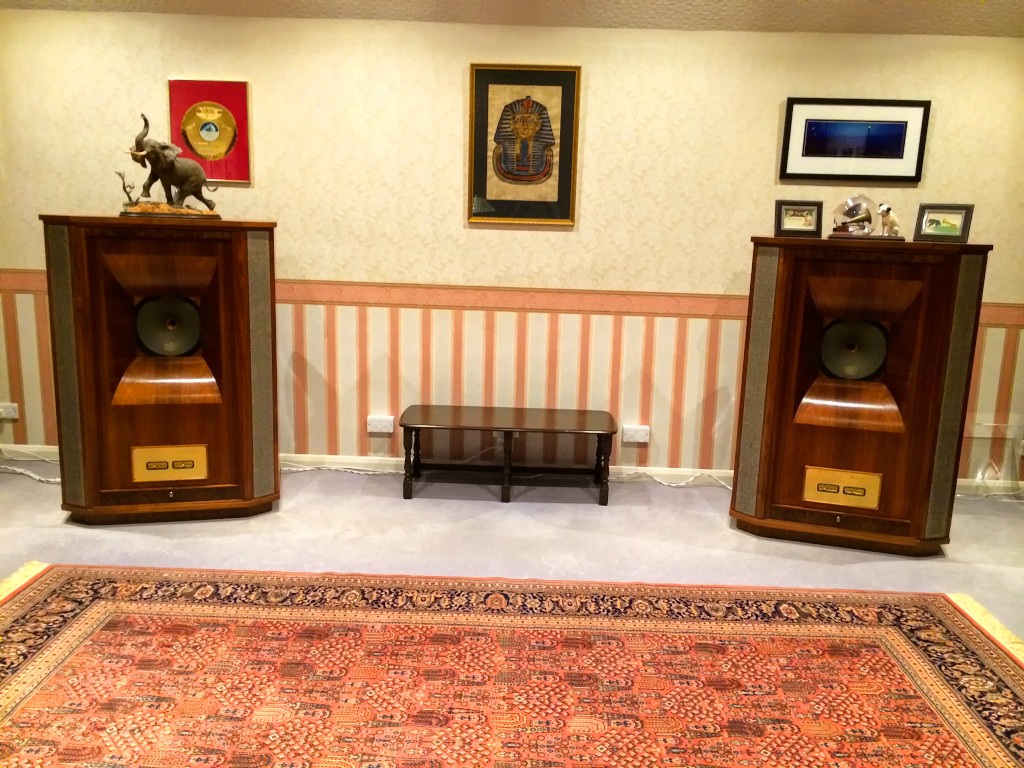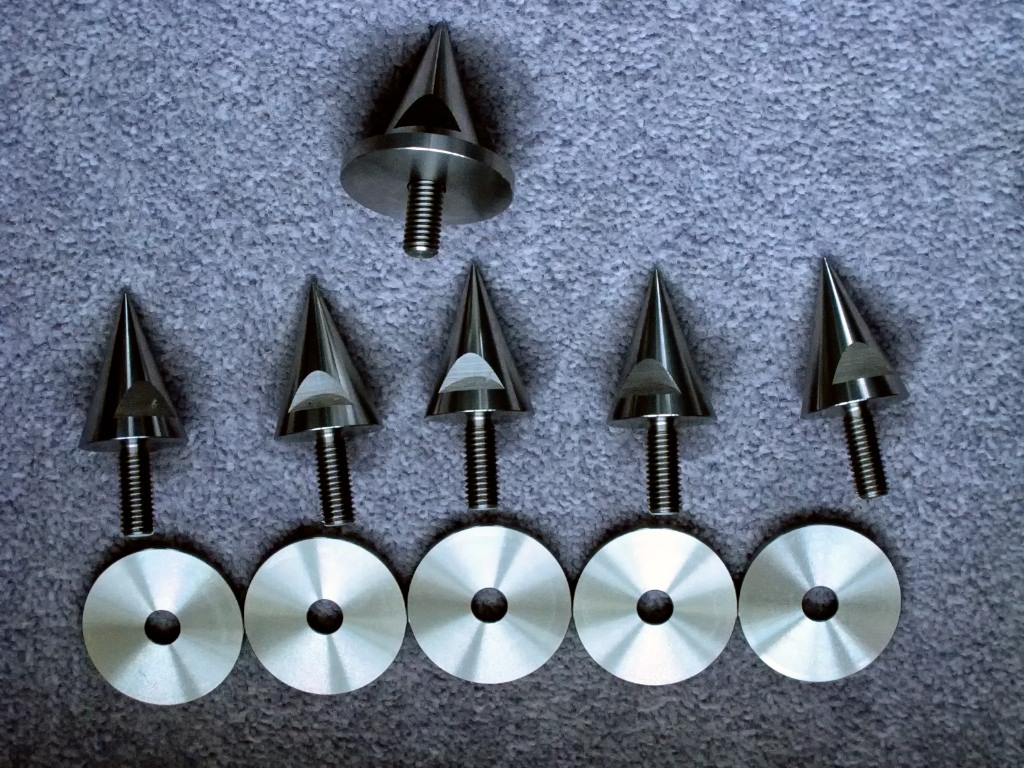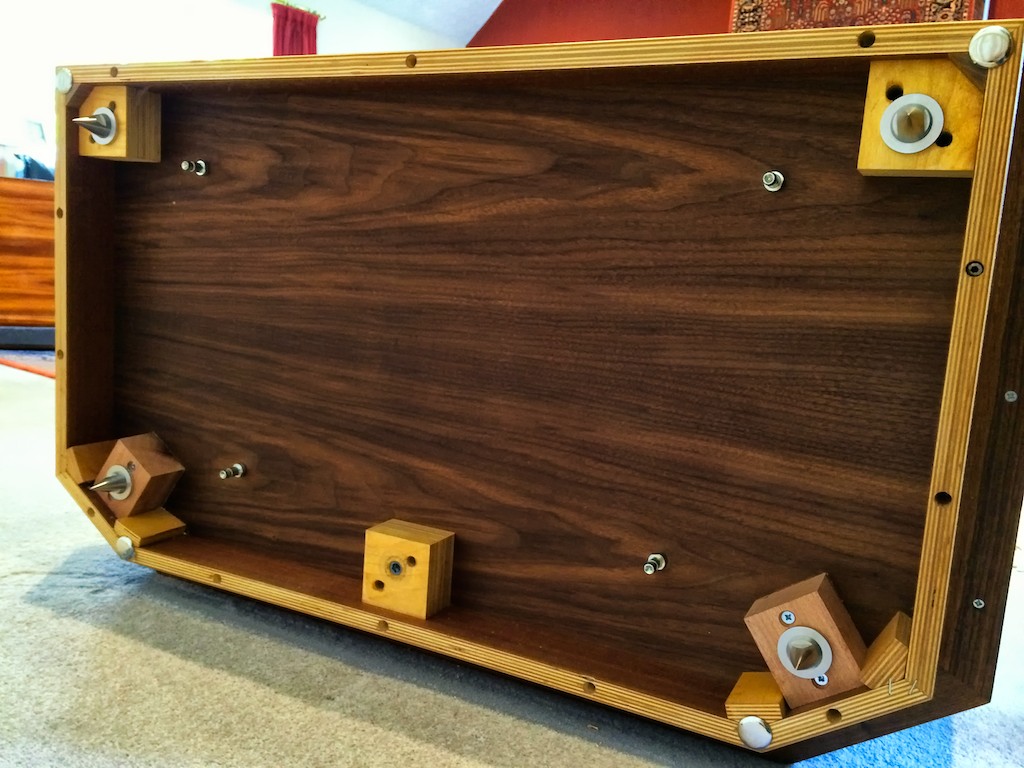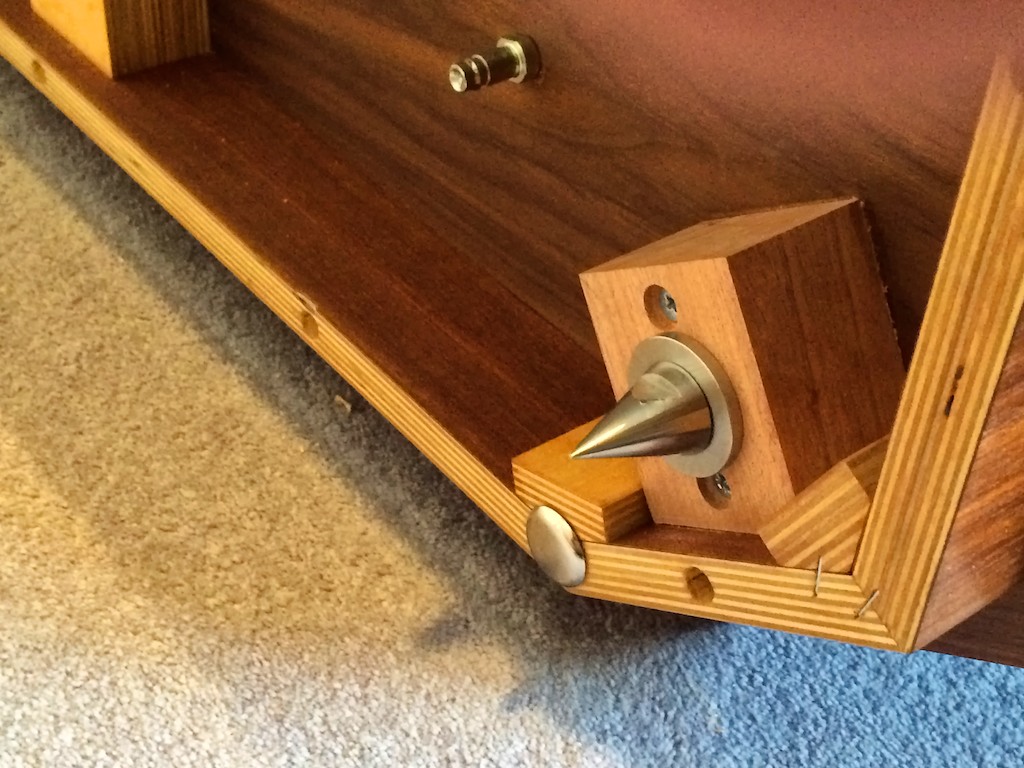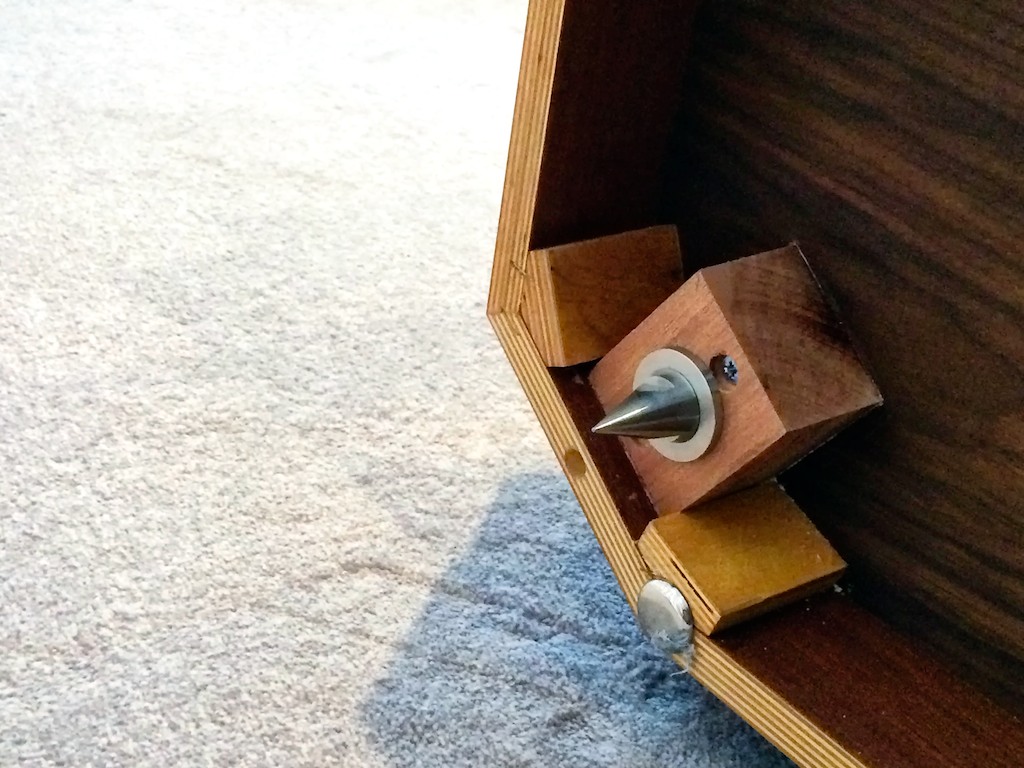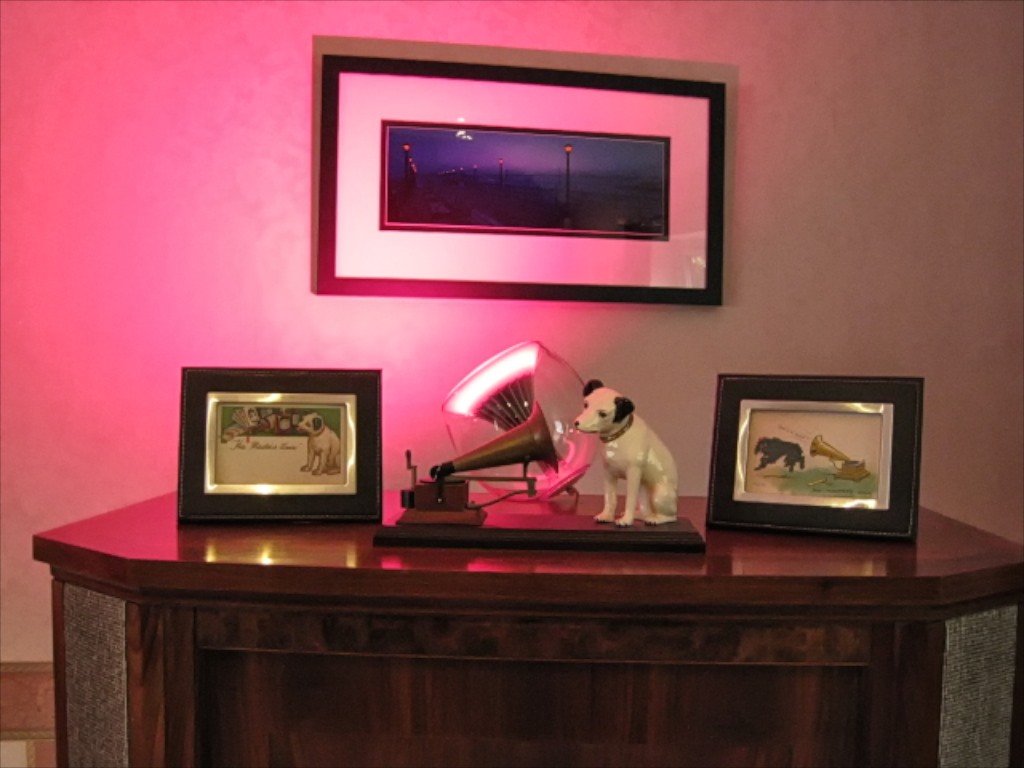It's always a pleasure to hear from fellow enthusiasts, and David King always has some great things to share with us about getting the most performance out of Tannoy Westminster Royals.
In David's latest message he tells us about his result experimenting with 4-point support for the big West's:
Enjoy!
Tannoy Westminster Royal HE - 4 Point Support System
By
David King
For several years I have had concerns regarding the support system of the Tannoy Westminster Royal loudspeaker. The system supplied by Tannoy consists of three conical steel feet per cabinet which locate in alloy inserts set in plywood blocks on the underside of the cabinets which locate in machined steel cups. These can be seen in Frank Rogers’s post of 22nd January 2014. I was alerted to the problem initially when I noticed that each time I moved the speakers they sounded different when I placed them back on the supports. Ignoring for the moment the fact that the standard support system was fundamentally of very poor design, on investigation it became clear that the reason for the sonic variations was that it was almost impossible to locate the conical feet with consistent accuracy on the cups, due in part to the existing deep indentations in the carpet dragging them off centre as the speakers were lowered onto them on the carpet, but also because of the difficulty of placing the cups under plinth working completely by touch.
In 2012, after a great deal of experimentation and prototyping of many alternative support systems I designed a new 3 point system using bespoke stainless steel feet and shims based on a system I had seen from another speaker manufacturer. This worked very well and was infinitely better than the standard system, but I still had some concerns about the use of three point support. While it is well known that three points always provide rock-solid mechanical grounding, intuitively it seemed wrong to have a single point of support on the leading edge of a cabinet that is almost a metre wide and 138kg in weight, leaving as it did, the front corners completely unsupported.
I was initially deterred from doing anything about this because of the daunting prospect of trying to balance the massive cabinets on four feet given the difficulty I had previously experienced resolving the issues with the 3 point support system. Eventually I plucked up the courage to start work and commenced assembling the materials I would need for the work. At this point I must express my thanks to Frank Rogers who very kindly supplied the two additional feet and shims I needed. I supplied an identical set of feet to the ones I use to Frank when he did my modifications to his WR’s in 2012/13 but since he moved on to Track Audio Isolation Feet to counter the effect of his suspended wood floor, they had become redundant.
With some very welcome help from my friend Robert, two new hardwood blocks were made for each cabinet which were then glued and screwed in place and the new feet installed. I was very lucky that one cabinet balanced perfectly first time. The second cabinet was balanced by fixing three feet initially and using the fourth to provide the adjustment required for perfect balance.
At the start of the project I had no great expectations as to the results and I thought that if there was no benefit I could easily return to 3 point support. I needn’t have worried because listening tests across a wide variety of material showed very worthwhile sonic benefits. Most notably these were:
- Improved detail and definition across all frequencies
- Improved transparency
- Sweeter sound with better balance
- Improved dynamics
- Better control
- More natural sound
The overall result of these improvements is that it is now easier to suspend disbelief and imagine oneself at a live performance, which must surely be a major objective for any serious music lover.
Having completed the project I contemplated why the improvement had been so marked. I concluded that it was almost certainly related to the presence of cabinet resonances. Imagine for a moment how the Westminster Royal cabinets might behave if they were made of more flimsy materials. With three point support there would be huge areas around the front corners of the cabinets which, completely unsupported, would be able to resonate freely and pass those vibrations through the cabinet. This effect would of course be exacerbated with a speaker like the Westminster Royal given its prodigious bass output. Clearly this is an extreme example but it’s not difficult to see that even with the very heavy, well braced cabinets of the WR the same unsupported corner areas are present, as would be some cabinet resonances, albeit now reduced and better controlled in the stronger cabinets, but importantly still there. Those resonances would certainly be transmitted via the cabinet to the drivers neutralising detail and transparency and generally degrading the sonic output. My hypothesis is that four point support controls the cabinet resonances by supporting the cabinet corners, thus freeing the drivers from cabinet borne interference allowing them to do their job more effectively, resulting in improvements in sound quality.
Overall I was delighted with the results of this experiment and can confirm that the results more than justify the expenditure.
Anyone who is interested in obtaining additional information please feel free to contact me and I will try to help. My email address is [email protected]
Many thanks to you, David, for sharing your results with us here at Jeff's Place - very much appreciated!





